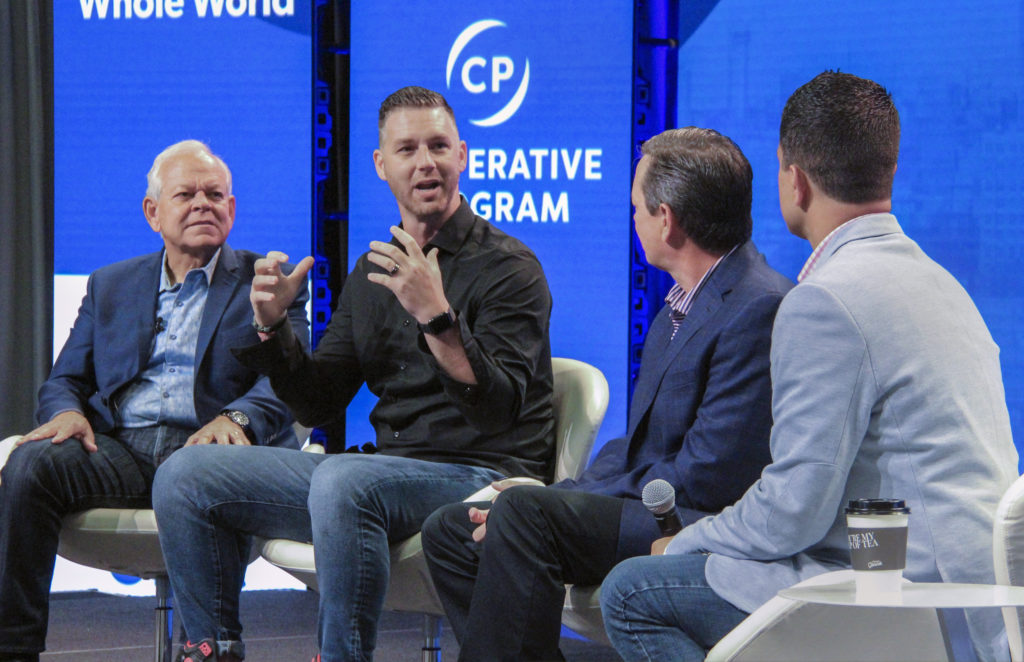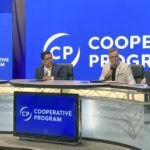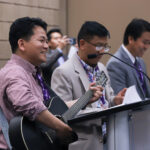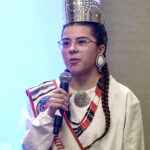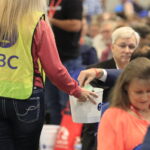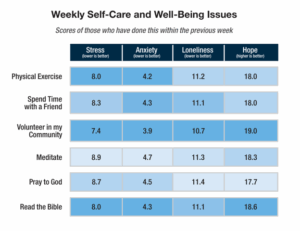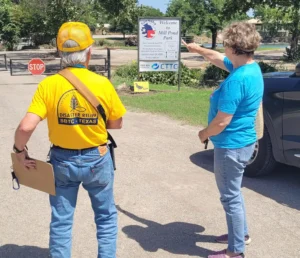
NASHVILLE (BP) – The Vision Stage in the 2021 SBC Annual Meeting exhibit hall saw approximately two dozen different panels over three days discuss topics ranging from the sending missionaries to leading a church in a post-pandemic world – all with a focus on the Great Commission.
Below are descriptions of some key panel discussions, followed by video recordings of each one. See earlier Baptist Press reports on panel discussions about diversity in the SBC as well as a discussion among past SBC presidents about the status of the convention.
Young leaders
By Timothy Cockes
Several panel discussions during the Vision Stage at the 2021 SBC Annual Meeting revolved around the topic of training up young leaders.
During the Monday morning, June 14, hours on the 2021 Vision Stage, moderator Jordan Easley hosted many younger pastors speaking on topics related raising up other young leaders.
Easley, pastor of First Baptist Church, Cleveland, Tenn., oversees the SBC Leadership Pipeline, which was created this year at the request of SBC Executive Committee President and CEO Ronnie Floyd.
The Leadership Pipeline serves as a way to train Southern Baptist ministry leaders under 40 and allow space for them to have important or challenging conversations about the convention.
Panel discussions during the 9-11 a.m. time slot included:
- Preparing for Revival
- How Do We Truly Become a Great Commission Convention?
- What is it Going to Take to Reach the Next Generation?
- A Convention Conversation with a Handful of Generals
- Calling out the Called
Panelists included Robby Gallaty, pastor of Long Hollow Baptist Church in Hendersonville, Tenn.; Jeff Lorg, president of Gateway Seminary; H.B. Charles Jr., pastor at Shiloh Metropolitan Baptist in Jacksonville, Fla.; and Vance Pitman, pastor of Hope Church in Las Vegas.
Easley said he hopes the panels and the Leadership Pipeline as a whole will encourage young leaders in the SBC to pay less attention to the things that divide people, and instead focus on unity around the Gospel.
“The SBC is not a great big dumpster fire to put out; it is a great big family,” Easley said. “We need to focus on things that are going to matter in 100 years. What’s going to matter in 100 years is what we did with Jesus.”
Advancing the vision
By Kirby Cochran
International Mission Board President Paul Chitwood shared the story of his journey to a relationship with the Lord and then to a calling to missionary mobilization Monday, June 14, on the Vision Stage.
Ronnie Floyd, president and CEO of the SBC Executive Committee, joined Chitwood on stage for a relaxed conversation about following a life calling. Floyd opened the conversation by asking Chitwood to share his story and his path to the IMB and missionary mobilization.
Living in a small town with two brothers and a single father, Chitwood was not initially raised in church. One day, a pair of deacons knocked on their front door, and the following Sunday their family joined the deacons for church.
“That then became the pattern of our life,” Chitwood said.
Chitwood’s family remained in that small church family where he and his brothers would eventually be saved and baptized. In his first year of college, Chitwood felt the Lord call him toward pastoral ministry, which he pursued at Southern Baptist Theological Seminary and then as a pastor in churches around Kentucky.
Chitwood said that during a “missions week” while in his first pastorate, he felt the Lord calling him to help mobilize missionaries. He later served as a trustee of the IMB and has been president since 2018.
Floyd then turned the conversation toward the missionary calling and asked Chitwood if he believed there was such a calling.
“We believe in the Great Commission,” Chitwood answered, “and we believe we all have a part to play in the Great Commission, every person. I think it’s as clear as – is my role a mobilizer or is my role that of a missionary in getting the Gospel to the nations?”
As the discussion continued, Chitwood praised the courage of missionaries who are called internationally as they not only go to the nations but stay and are prepared to give their lives for the Gospel. He shared stories of missionaries who first surrendered their lives as they followed the Lord and their calling, and who later gave up their lives for it.
“Those are the kind of people we get to support,” he said. “They’re taking the Gospel to the ends of the earth to the hardest to get places and willing to die to do it. Our job is to hold the ropes.”
Adding 500 missionaries
By Kirbi Cochran
A June 14 panel discussed Vision 2025 and the SBC’s four-year push to live out the Great Commission by “reaching every person for Jesus Christ in every town, every city, every state and every nation.”
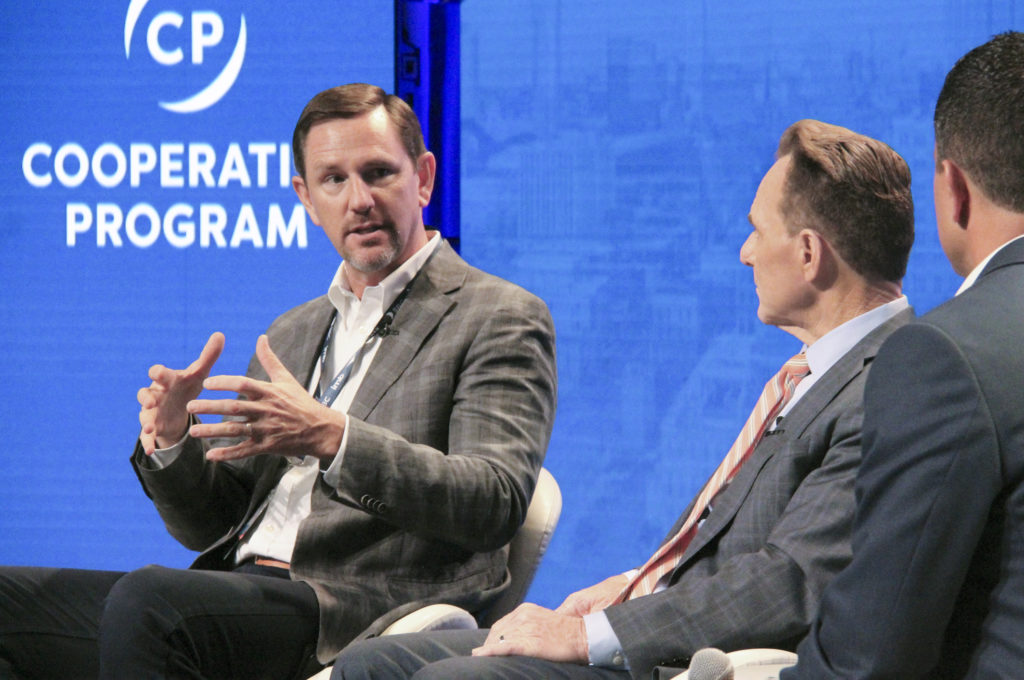
The panel speakers consisted of Jordan Easley, pastor of First Baptist Church in Cleveland, Tenn., Ronnie Floyd, president and CEO of the SBC Executive Committee and Paul Chitwood, president of the International Mission Board.
They began their discussion by covering Vision 2025’s Strategic Action #3 “Calling out the Called,” which seeks to increase the number of workers for the Gospel by encouraging pastors to call out those in the church who receive a calling from the Lord. Once they accept that call, the church must equip and prepare them to go in obedience to the Lord.
“God is the one who calls, but we have the privilege of putting a voice to that call,” Chitwood said. “We have the privilege of pointing to God’s call in Scripture upon the lives of those who He would use, and in this, people respond. They respond to the Lord to the Lord’s word, and we get to be a part of that.”
As the number of those called increases, so will those ready be sent as international missionaries. The SBC plans through Strategic Action #1 of Vision 2025 to increase the number of active missionaries by 500. Currently there are 3,361 fully-funded missionaries supported by the IMB as well as 2,700 children serving as part of their missionary families.
However, raising that number requires more than just 500 new missionaries. Every year, around 300 missionaries return home due to age, health issues or other needs. So, to reach the 2025 goal of and additional 500, the IMB must send 425 new missionaries abroad every single year.
Easley said 500 should be the floor, not the ceiling. The panel agreed that they all hoped to surpass the goal.
“These are strategic requests to push the mission forward to get us to the edge of lostness and get the Gospel where the Gospel isn’t,” Chitwood said. “How do we do that? It’s by calling out the called. How do we do that? It’s by working together.”
Floyd, Chitwood and Easley all stressed the importance of Visions 2025’s Strategic Action #5, which calls to increase giving through the Cooperative Program, the fund which supports all national and international missions and SBC ministries, to at least $500 million by 2025. By increasing funding for the Cooperative Program, churches increase the ability of the IMB to send more missionaries and provide resources and support for them on the field.
Who’s Your One and reaching young people
By Kirbi Cochran
A June 15 Vision Stage panel discussion dealt with the continual decline in baptisms of 12-17-year-olds and the Vision 2025 plan to reverse this trend through the North American Mission Board ‘s (NAMB) “Who’s your one?” initiative.
Panel speakers included Jordan Easley, pastor of First Baptist Church, Cleveland, Tenn.; Johnny Hunt, NAMB senior vice president of evangelism and leadership; NAMB President Kevin Ezell; and Shane Pruitt, NAMB national director of next gen evangelism.
Since the initiative’s launch in 2019, NAMB has hosted 27 “Who’s Your One?” conferences across the country. These conferences are a time of worship, teaching and prayer to equip believers as they bring the Gospel to the world around them. “Who’s Your One?” is also an individual and church movement where NAMB encourages everyone to identify one non-believer whom they commit to pray for and intentionally share the Gospel with.
“If you’ve been bought with the blood of Jesus, you have the Holy Spirit of God,” Pruitt said. “Whether you’re a 13-year-old, 18-year-old or 20-year-old, you’re not the future of the church, you are the church right now. So, go be the church.”
Church leaders and pastors play a large role in the evangelistic initiative of a church in its community. Hunt spoke on the importance of leaders modeling evangelism rather than delegating it.
“There is no evangelistic church without an evangelistic pastor,” Hunt said.
In the fall of 2020, NAMB conducted a poll on Twitter asking current believers at what age they surrendered their lives to Jesus Christ. The age options listed were 13 and under, 13-18, 18-30 and 30-plus. Of these options, 48 percent surrendered their life before the age of 13 and 77 percent surrendered their life to Christ before the age of 18 (including the first two categories).
“I know God is sovereign,” Pruitt said. “He can save whom He wants when He wants. But practically speaking, if we don’t reach a generation before they turn 18, then we lose a generation. So, now is the time.”
To close the session, the panel encouraged everyone to support the Cooperative Program, which funds the establishment and growth of new churches. Churches planted since 2010 account for 17 percent of baptisms in the SBC.c
Everyone can take part in the “Who’s Your One?” initiative by texting “One” to 888123 and including the first name and city of the one person you are committing to pray for that they would come to know Christ.
Rebuilding the church post-COVID-19
By Kirbi Cochran
A panel of pastors discussed their churches’ experiences during COVID-19 as well as methods for churches and pastors to recover and grow as they exit the pandemic season.
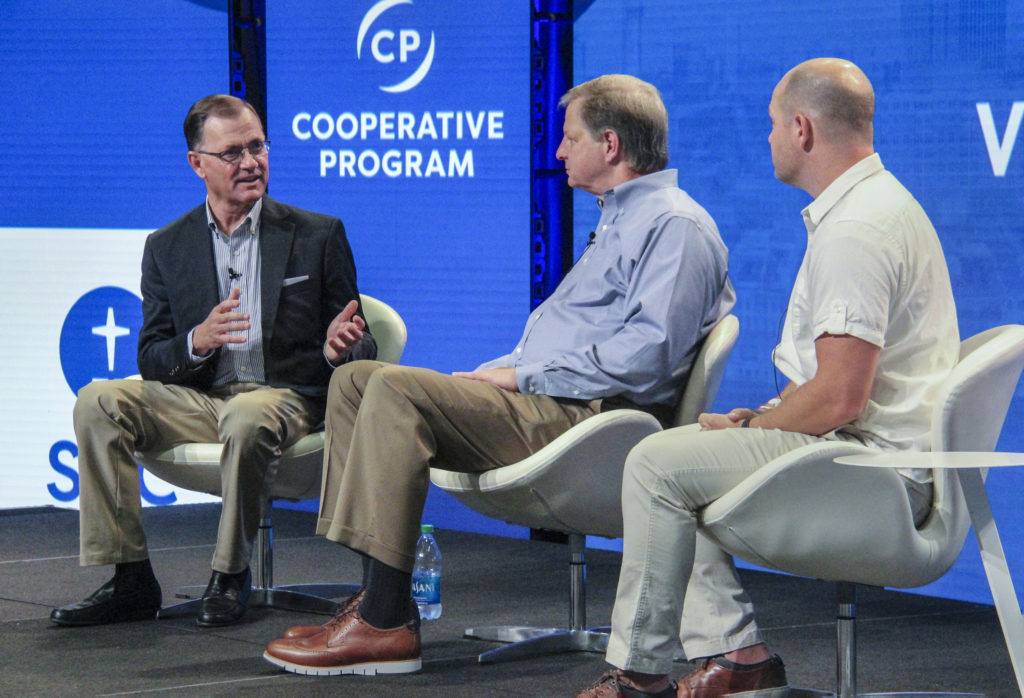
The June 15 Vision Stage panel included Whitney Clayton, pastor of Living Stone Community Church in Mesa, Ariz.; Buddy Champion, pastor of First Baptist Trussville, Ala.; and Ronnie Raines, pastor of First Baptist Church, Clarksville, Tenn.
Champion recounted his own church’s navigating the pandemic, saying he was thankful for the trust his congregation placed in him. He said he sought new technological solutions as well as new methods to minister to people even with the physical distance.
“Let’s do everything we can to be effective in what we’re doing although we’ve never done it this way before,” he said. “Let’s embrace it because good comes from bad, Romans 8:28 really is true.”
Raines’ experience differed greatly from the other pastors. He became pastor of his church in the middle of the pandemic. So unlike Clayton and Champion, he did not have a bank of trust built up with his congregation, so he started from scratch. In order to meet the members of his church who were unable to attend in-person, he scheduled time every day to contact five or six families through a phone call.
All three panel members shared the same struggle of attempting to continue administering pastoral care even without a face-to-face connection.
“I don’t know that I’ve ever walked through a season as a pastor that demonstrated so clearly to me that I need all the saints to do the work of the ministry more than this season,” Clayton said.
Clayton acknowledged that many pastors in the last year d new methods and technologies to reach their church membership. He said now the challenge is to decide which of those changes will remain moving forward and which will be laid aside.
Although online services worked well for families who could not come to church in person, Raines pointed out that it also isolated people from their Christian community. He urged everyone who is able to return to in-person services. There, the church body can better support its members in discipleship, in spiritual growth and in the midst of trials.
The panel also stressed how deeply pastors need a similar network of support with other pastors. When in hard seasons such as COVID-19, Champion said that church leaders must invest in one another so that they have a stronghold of brothers to lean on.
“Pastors need to be healthy to lead healthy,” Raines said.
In closing, the group encouraged pastors to seek out one another both through in-person meetings or group messages and phone calls in order to build healthier pastors who go on to lead healthier churches.
Watch videos below of panel discussions from the Vision Stage.
